Editor's note: Master Gardeners are keeping busy in their own gardens during Napa County's “Shelter in Place” directive. It's spring, it's getting warmer, it's a great time to work in the garden! Here's how Master Gardeners are spending their time:
by Dianne Weyna
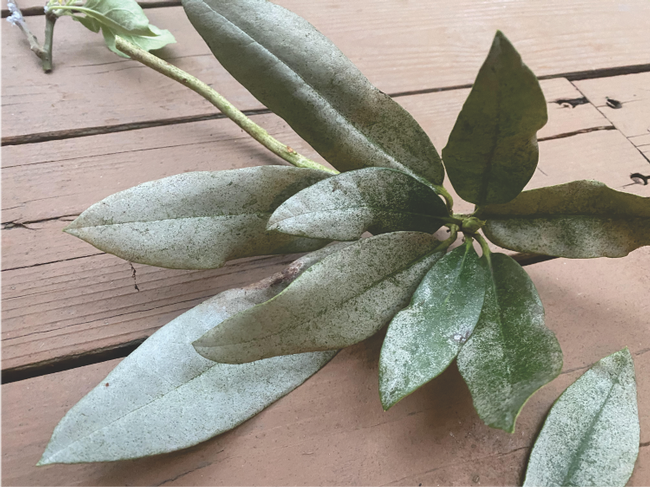
I checked some UC IPM pest notes and it could be thrips or lace bugs. Both can be hard to distinguish because of their tiny size. It could be mites, but there is no leaf drop or terminal bud distortion and mites don't leave black excrement. I did see a thrips earlier in the year, so I think that is the most likely cause of the leaf damage.
Good cultural care includes removal of nearby weeds that could harbor the pests, taking care of the plant according to its needs, clearing out old flower buds and cutting off the damaged plant parts. It's probably time to start watering.
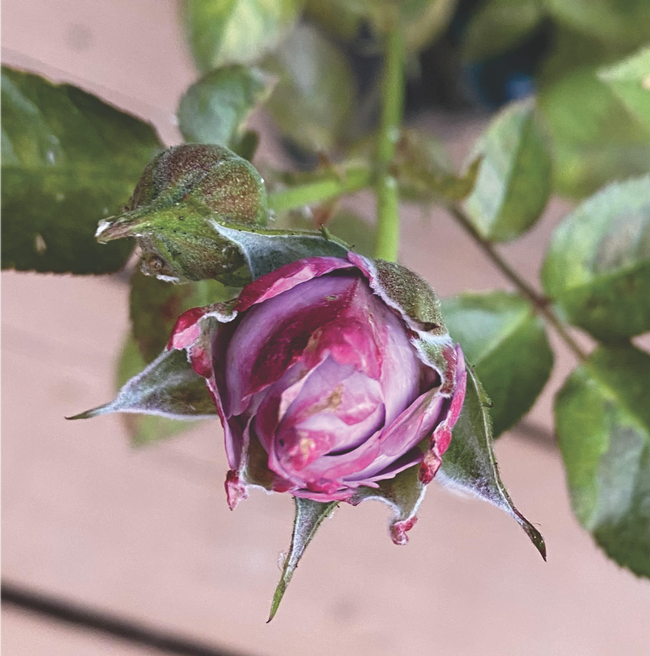
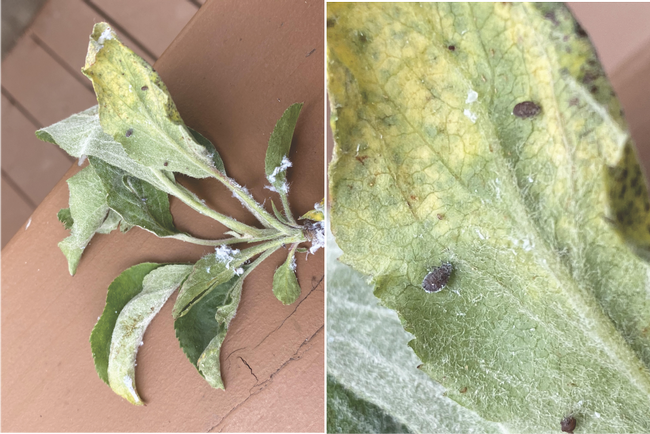
I see numerous problems on one of the roses, all the others look good. Some leaves have a brownish, dried looking area in the middle. There are a lot of dark spots and a white substance on top and underside of the leaves. I see ants and aphids and an occasional cobweb. Also, the buds look damaged with brownish tips. Looking through a loupe I have seen a couple of round balls with holes in them and a small caterpillar, possibly a dead white fly. I wonder why there is so much damage on this plant? White fly and aphids could be the cause of the leaf damage, but why the bud damage? I see some small aphids in the buds. I looked in ANR pest notes and some diagnostic tools where I discovered that the few round hard bumps I thought might be scale look exactly like mummified aphids, with the escape hole of a parasitic wasp!
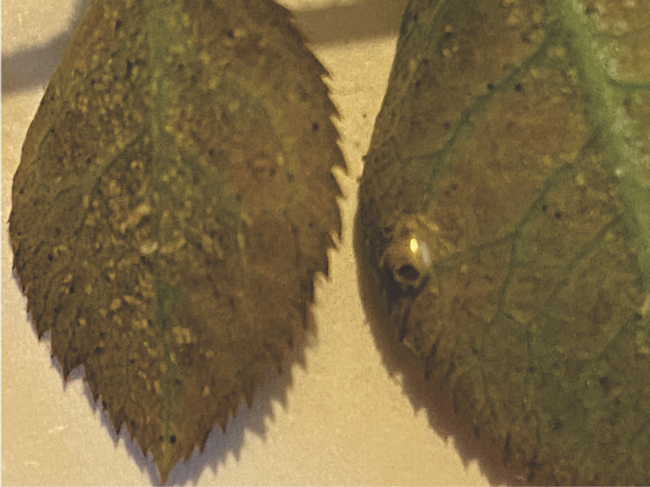
I will continue appropriate cultural care and check the other plant for beetles and white fly. A stream of water could get the aphids off, but knowing parasitic wasps are at work, I will live with the aphids right now.
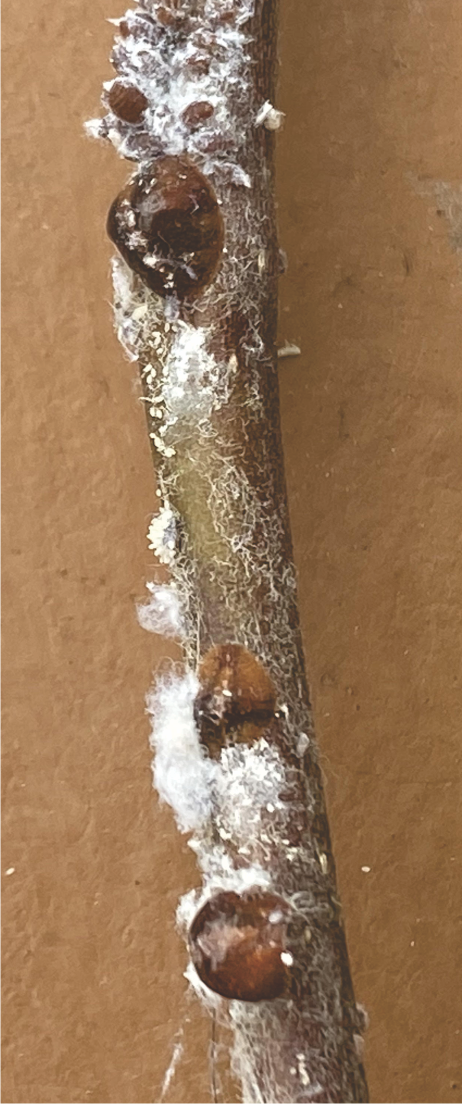
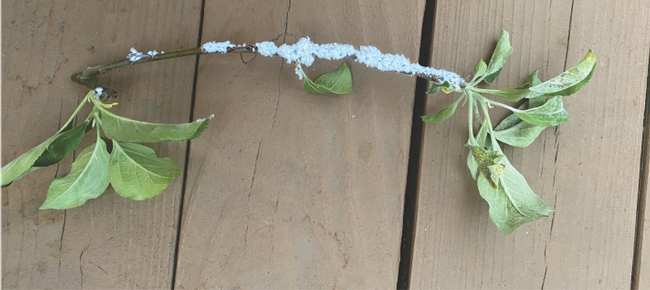
I'm diagnosing the aphids as woolly apple aphids, and the scale as European lecanium scale. I have discarded the stem that had the scale, will keep monitoring and possibly spray with a horticulture oil next year if there is an infestation.
Informational links:
UC IPM-rhododendron http://ipm.ucanr.edu/PMG/GARDEN/PLANTS/rhododendron.html
UC California Garden Web-Roses http://cagardenweb.ucanr.edu/Landscape_Trees/Roses_are_Special/
UC California Backyard Orchard-Apple http://homeorchard.ucanr.edu/Fruits_&_Nuts/Apple/
UC ANR pest notes:
PN7428 lace bugs http://ipm.ucanr.edu/PMG/PESTNOTES/pn7428.html
PN7429 thrips http://ipm.ucanr.edu/PMG/PESTNOTES/pn7429.html
PN7404-aphids http://ipm.ucanr.edu/PMG/PESTNOTES/pn7404.html
PN7401-whiteflies http://ipm.ucanr.edu/PMG/PESTNOTES/pn7401.html
PN7499-hoplia beetles http://ipm.ucanr.edu/PMG/PESTNOTES/pn7499.html
PN7408-scale http://ipm.ucanr.edu/PMG/PESTNOTES/pn7408.html
UCANR publication #3359:
‘Pests of Landscape Trees and Shrubs', 3rd Edition Author: STEVE H. DREISTADT
Copyright Date: 2016 ISBN-13: 978-1-60107-864-3
Pages 177, 195, 207-208, 210, 245, 351-352, 377
Rhododendron: University of California, ANR Publication 3359, third edition, p. 377, 207-8, 210,245.
University of California, ANR Publication 3359, third edition 3359 p. 177, 195 351-352.
During Napa County's shelter in place directive that protects everyone's health and safety, Napa Master Gardeners are available to answer garden questions by email: mastergardeners@countyofnapa.org. or phone at 707-253-4143. Volunteers will get back to you after they research answers to your questions.
Visit our website: napamg.ucanr.edu to find answers to all of your horticultural questions.
Photo credits: All photos by Dianne Weyna